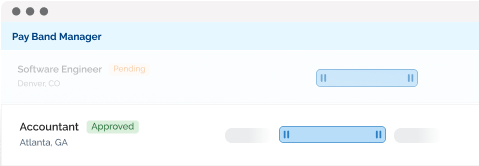This special edition of the Insights newsletter breaks down a recent downward revision to hiring totals.
The Bureau of Labor Statistics (BLS) released data reporting that the labor market created 818,000 fewer jobs than previously reported, from March 2023 through March 2024.
So, what is the impact of this change? The previous 12-month job creation total of 2.9 million for that period has now been revised downward to 2.1 million. The previous robust 242,000 monthly job creation average is now closer to a respectable 175,000 new jobs added monthly.

This revision has created news and attention from analysts and political pundits due to the correction. The reality? This is old news. Why? We have already lived through the period ending in March 2024. Many of us working in or closely with HR and talent acquisition noticed that conditions were less robust than headlines and labor market data suggested.
Of note, HR and TA leaders’ sentiments can be a leading indicator of where the labor market is heading. These professionals are on the front lines of job cuts, hiring freezes, reorganizations, and hiring sprees.
Some Context | What does this mean for businesses?
Let’s put these revisions into context. The 818,000 downward revisions were the largest since 2009, when job gains were revised downward by 824,000.
A comparison to the Great Recession in 2009 might seem foreboding, but things are different. Yes, the labor market is cooling, and the labor market was weaker over the past year than original estimates suggested. However, on a relative basis, the 2024 revisions represent a lower share of overall employment. In 2009, there were around 130 million workers in the U.S. Today, that number is closer to 160 million.
Don’t get me wrong – this is a large adjustment. But it doesn’t provide a lot of new information or tell us something about the labor market we didn’t already know.

Revisions to labor market data happen all the time. With each monthly jobs report, employment and job gain totals are revised for the previous two months. So, when the August jobs report is released on September 6, it will include revisions to June and July’s employment totals.
This preliminary benchmark revision that occurred this week is something that happens every year in August, and is nothing to be alarmed about. I’m an economist, not a banker or financial expert, but the stock market has been relatively unfazed by this revision. To me this suggests it was in line with expectations that the labor market has been cooling and previous hiring totals overestimated labor market strength.
Deep Dive | Why does labor market data get revised?
The U.S. government collects labor market data to drive policy decisions by government agencies and the Federal Reserve.
Collecting data on the approximately 160 million workers and 12 million businesses in the U.S. is not an easy task. In fact for the monthly jobs report, there are two major monthly surveys, plus a quarterly survey, that provide the data on employment, unemployment, wages, and labor force participation.
But the government isn’t reaching out to every single worker, unemployed job seeker, or business owner each month. Surveys rely on a smaller, representative sample to provide estimates. You want the survey sample to be the most accurate reflection of the underlying population possible.
With survey data, there’s a constant tradeoff between timeliness and precision. The monthly BLS reports provide valuable insights into labor market trends, but they tend to be more noisy especially during times of change in the labor market. The quarterly data driving this revision are more complete, but they are lagged because it takes more time to compile given that they are an aggregation of data from state unemployment insurance records.
Revisions are a re-calibration of historical labor market data based on new information, and they are a normal part of our labor market data collection and production process. The revisions released this week are a preliminary revision, and we won’t have the final revisions until January 2025’s monthly jobs report is released next February.










